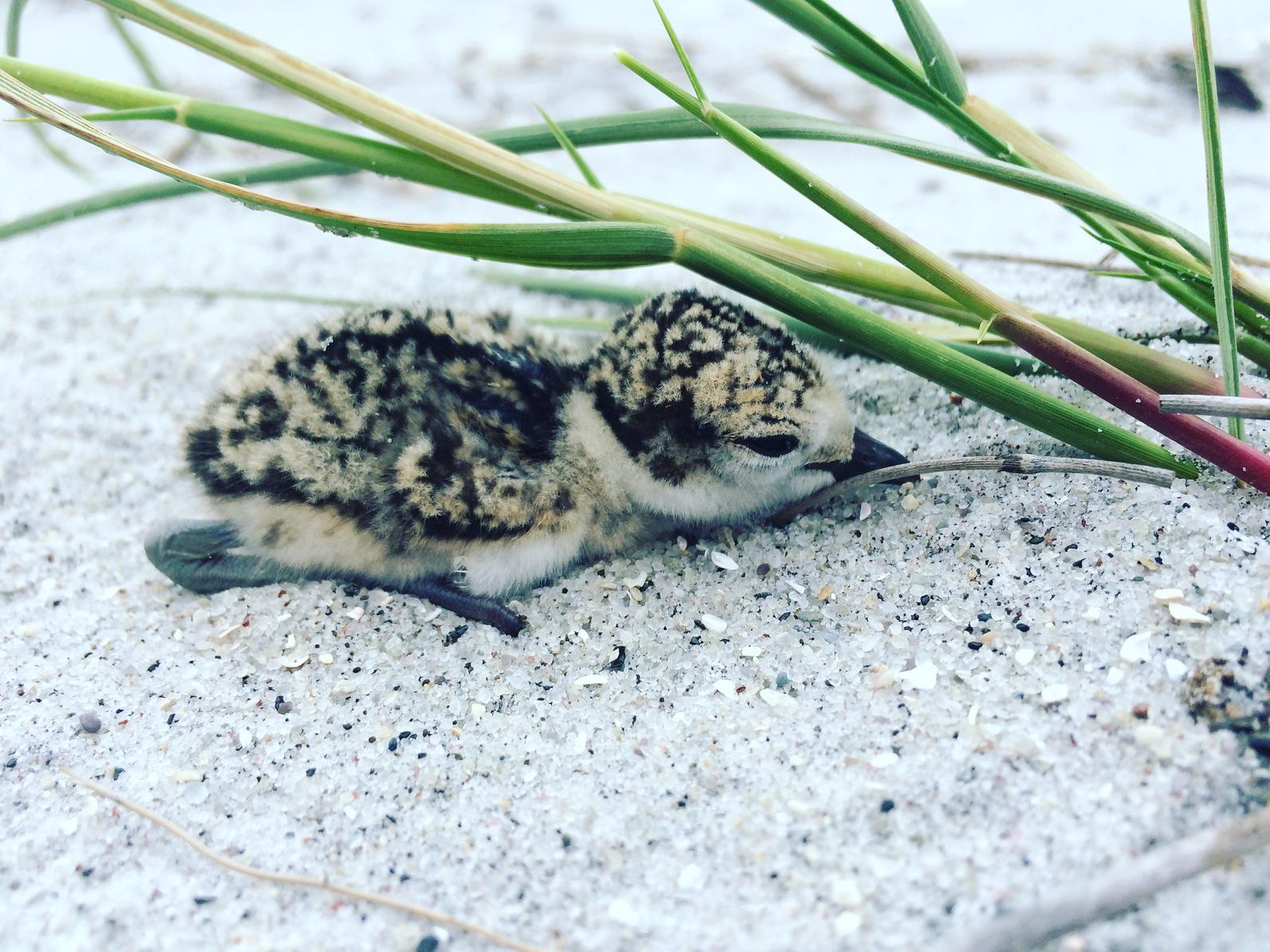As Audubon North Carolina's Coastal Biological Technician, Anna Parot spent the past summer walking up and down the length of Lea-Hutaff Island surveying and studying nesting American Oystercatchers.
The experience was so fulfilling, she's back for a second year!
Lea-Hutaff is one of the few unbridged, undeveloped barrier islands in North Carolina. Although it has been battered by storms, flooded, overwashed, and eroded, Lea-Hutaff is a haven for birds and wildlife and a popular destination for beachgoers who enjoy walking, swimming, fishing, and wildlife viewing.

A North Carolina native, Anna received a B.S. in Marine Science with a Biological Concentration and a minor in Biological Sciences from NC State in 2015. This summer, like the last, her focus will be nesting birds and sea turtles on Lea-Hutaff Island.
"At least three times a week, I wake up before dawn and drive the Audubon boat out to Lea-Hutaff Island. I walk the entire length of the island and back, around 10 miles to monitor the nesting pairs and look for banded birds to report, mainly American Oystercatchers. American Oystercatchers are our main focus on the island, as one of Audubon NC's main objectives is assessing the productivity of this climate-threatened species."
As she crosses the island, Anna looks for different nests to survey and study, tracking Wilson's Plovers, Willets, Clapper Rails, and American Oystercatchers by logging them in her GPS unit and returning to check on them through the nesting season. "After nesting season is over and the chicks have hatched," Anna explains, "I find the chicks and determine where they go to feed and where they spend their time. This way when they’re older, they can be located and banded."
Last year, Anna was able to track twenty pairs of American Oystercatchers!

“For me, it’s like a treasure hunt, it’s so exciting to find a nest!” Anna said. “You’re looking for so long, and when you find them it’s like winning a competition. The chicks are so adorable, the wait is worth it.”
Unfortunately, not all nests make it every year, Anna explains, but shorebirds will try up to three times if their chicks don’t make it to a fledging age. Overwash and flooding can take out a nest, as can predators like raccoons and foxes. "Normally there are three oystercatcher chicks that make it and last year we had 10 that fledged," which was extremely exciting for Anna and the team.

“Overall, we’re learning a lot about what the American Oystercatcher needs to survive, how productive they are and who their predators are,” Anna says. “We’re showing people why it’s important to share the beach if you want these birds to always be around.”




